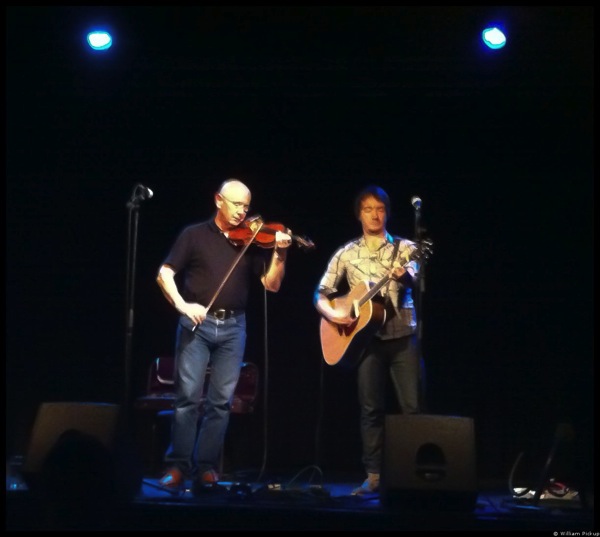Musical Moments
Capturing the intimate connection between musicians and their craft in live performance settings

The Language of Live Music
There’s something irreplaceable about live music - the way sound fills a space, the connection between performer and audience, the subtle interplay of technique and emotion that can never quite be captured in a studio recording. This small but carefully curated collection attempts to document some of these fleeting moments when music comes alive in intimate venues.
These photographs were taken across various performances, focusing particularly on folk and traditional music where the emphasis is on storytelling and the authentic expression of musical tradition. The challenge of concert photography lies in capturing not just the visual elements - the performers, the venue, the atmosphere - but somehow suggesting the music itself through purely visual means.
Tom McConville: Master of Tradition
The centerpiece of this collection features Tom McConville, one of the finest traditional fiddlers of his generation. Known for his work with Lindisfarne and his solo career exploring Northumbrian and Celtic musical traditions, McConville represents the kind of musician who embodies the living tradition of folk music.
Photographing musicians like Tom requires understanding not just the technical aspects of low-light photography, but the rhythms and patterns of musical performance. Knowing when the intense concentration will break into joy, when the quiet passages will explode into energy, when the connection between musician and instrument becomes so complete that they seem to disappear into the music itself.
Intimate Venues, Infinite Possibilities
The venues captured in this collection represent the kind of spaces where music feels most alive - small theaters, clubs, and halls where every seat has an intimate connection to the performance. The Marine Theatre and similar venues create an atmosphere where music can be experienced as it was originally intended - as a shared, communal experience rather than isolated consumption.
These smaller venues present unique challenges for photographers. Low light, restrictive movement, and the need to remain unobtrusive all require careful planning and sensitive equipment choices. But they also offer rewards impossible in larger venues - the ability to capture genuine intimacy, authentic emotion, and the subtle details that reveal the humanity behind the performance.
Visual Music
The goal of this collection is to create what might be called “visual music” - images that don’t just document a performance but somehow convey the feeling of the music itself. This requires paying attention to gesture, expression, the relationship between musician and instrument, and the way light and shadow can suggest rhythm and melody.
The close-up shots focus on the physical relationship between performer and instrument - the way fingers move across strings, the concentration in facial expressions, the body language that reveals the deep connection between musician and music. These details often tell more about the essence of musical performance than wider shots of entire stages.
Album Art and Musical Aesthetics
The collection also includes images that explore the visual aesthetics associated with particular musical genres. Folk and traditional music often draws inspiration from landscape, from rural life, from the same sources that inspire landscape photographers. There’s a natural connection between the visual and musical arts that this collection attempts to explore.
The “Lost in This Beautiful World” image represents this convergence - where musical and visual aesthetics meet in the suggestion of place, atmosphere, and emotional landscape. Music and photography both deal with time, rhythm, and the capture of fleeting moments, making them natural artistic companions.
Technical Approach
Photographing live music requires a different technical approach from other forms of photography. Fast lenses, high ISO capabilities, and the ability to work in available light become essential. More importantly, it requires understanding the music well enough to anticipate the moments worth capturing.
The best concert photographs are rarely random captures but result from understanding musical structure, knowing when the climactic moments will occur, and being in position to document not just what happened but how it felt to be there when it happened.
This collection, while small, represents an ongoing fascination with the intersection of visual and musical arts - the challenge of making photographs that don’t just show what music looks like, but somehow suggest what it sounds like.
